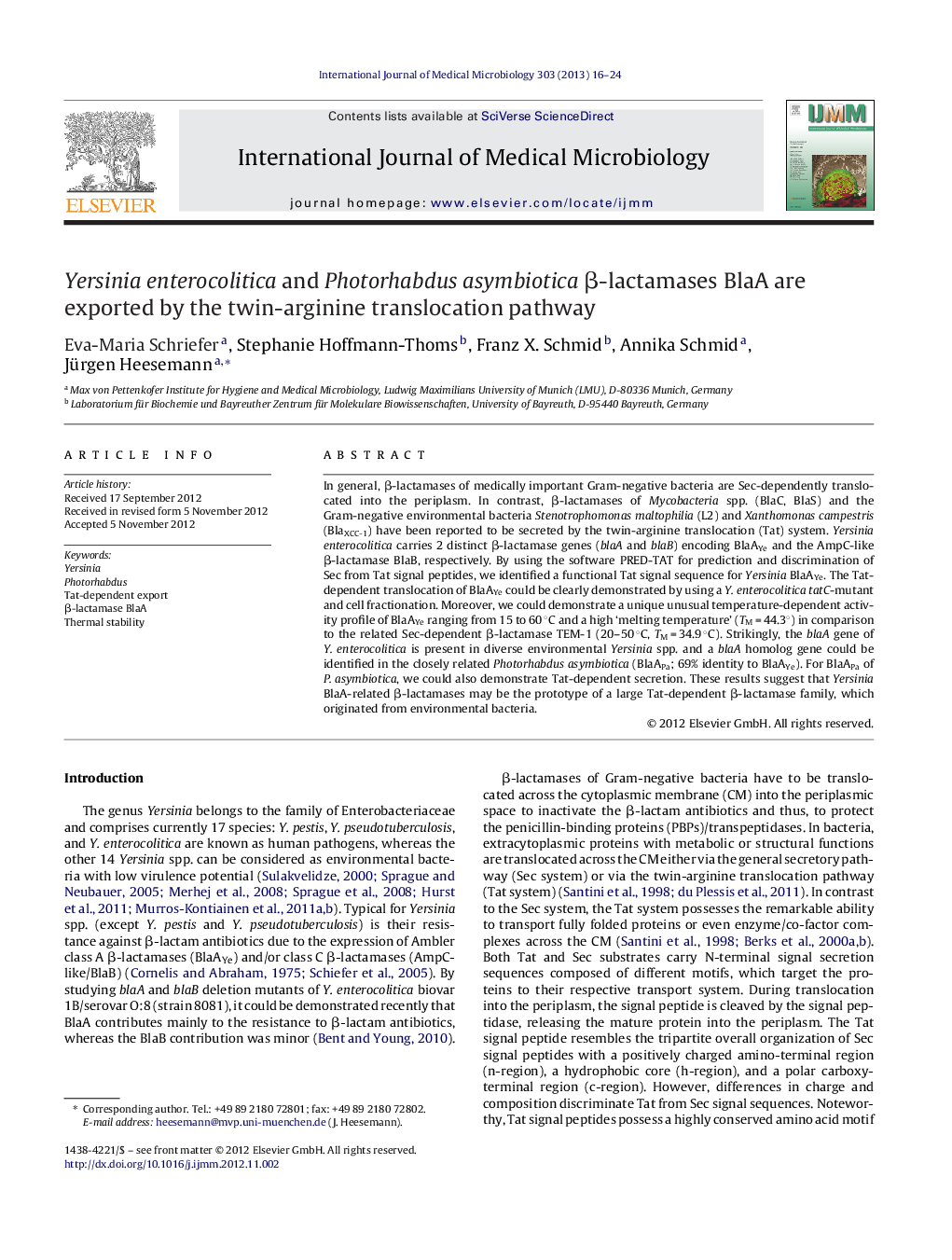| Article ID | Journal | Published Year | Pages | File Type |
|---|---|---|---|---|
| 2054840 | International Journal of Medical Microbiology | 2013 | 9 Pages |
In general, β-lactamases of medically important Gram-negative bacteria are Sec-dependently translocated into the periplasm. In contrast, β-lactamases of Mycobacteria spp. (BlaC, BlaS) and the Gram-negative environmental bacteria Stenotrophomonas maltophilia (L2) and Xanthomonas campestris (BlaXCC-1) have been reported to be secreted by the twin-arginine translocation (Tat) system. Yersinia enterocolitica carries 2 distinct β-lactamase genes (blaA and blaB) encoding BlaAYe and the AmpC-like β-lactamase BlaB, respectively. By using the software PRED-TAT for prediction and discrimination of Sec from Tat signal peptides, we identified a functional Tat signal sequence for Yersinia BlaAYe. The Tat-dependent translocation of BlaAYe could be clearly demonstrated by using a Y. enterocolitica tatC-mutant and cell fractionation. Moreover, we could demonstrate a unique unusual temperature-dependent activity profile of BlaAYe ranging from 15 to 60 °C and a high ‘melting temperature’ (TM = 44.3°) in comparison to the related Sec-dependent β-lactamase TEM-1 (20–50 °C, TM = 34.9 °C). Strikingly, the blaA gene of Y. enterocolitica is present in diverse environmental Yersinia spp. and a blaA homolog gene could be identified in the closely related Photorhabdus asymbiotica (BlaAPa; 69% identity to BlaAYe). For BlaAPa of P. asymbiotica, we could also demonstrate Tat-dependent secretion. These results suggest that Yersinia BlaA-related β-lactamases may be the prototype of a large Tat-dependent β-lactamase family, which originated from environmental bacteria.
